
2014-10-05: Dunes
The sand dunes at Cape Kiwanda are absolutely beautiful and ever changing with the wind. If you are so inclined, you can actually rent a "sled", climb to the top of the dunes and slide down! I can remember years ago when I was still agile, I used to love climbing these dunes.
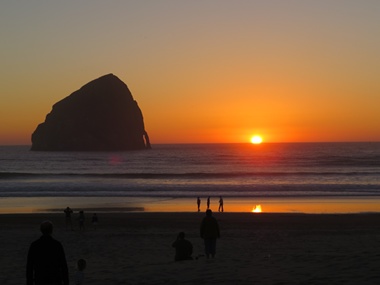
2014-10-05: Sunset
Another incredible place to watch a sunset!
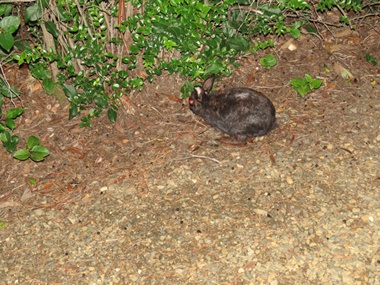
2014-10-05: Wildlife
Upon arriving back at the coach we were greeted by this cute rabbit. I guess lots of people must feed them because he was just sitting there looking at me. Since he looked like he was posing, I took his picture.
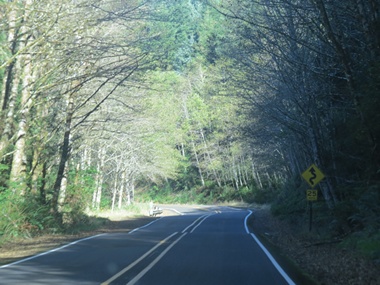
2014-10-06: Three Capes
Up and out this morning for an adventure up the coast driving the Three Capes Road. It is a narrow, windy road complete with some beautiful vistas.
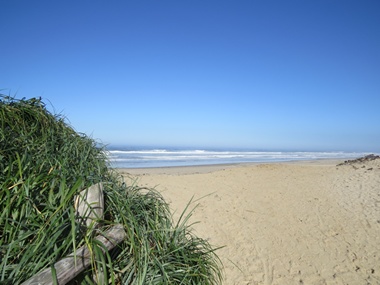
2014-10-06: Cape Lookout
Cape Lookout is a sharp rocky promontory. One has to hike 5-miles to reach the Cape Lookout Viewpoint high above the ocean so needless to say, I didn't do it and settled for this view from sea level.
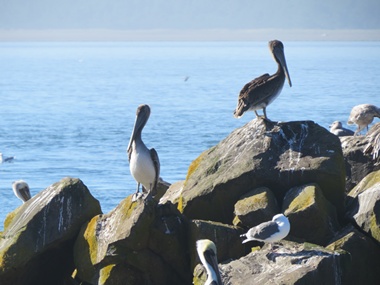
2014-10-06: Pelicans
Continuing north we made a stop at Netarts Bay where we saw pelicans on the rock outcropping. Talking to local also there to enjoy the view, I found out that the pelicans usually leave this area earlier in the year. She said perhaps the warm weather we're still having here is keeping them here later in the year.

2014-10-06: Cape Meares Lighthouse
The Cape Meares Light was originally built in 1890 and served as the light station for Tillamook Bay. In 1963, the lighthouse was deactivated and replaced by a newer tower. At only 38-feet-tall, Cape Meares Lighthouse is not colossal in size, but it is a delightful sight to see. What the picture doesn't show is the .2- mile walk down to the lighthouse and the significant uphill walk (about 10% grade) we had to get back to the parking lot!

2014-10-06: Three Arch Rocks
On one of my rest stops on the way up the hill, I got to enjoy beautiful Three Arch Rocks, a National Wildlife Refuge. These 400-foot high sea stacks provide habitat for Oregon's largest breeding colony of tufted puffins. The refuge also supports the largest breeding colony of common murre south of Alaska and is the only pupping site on the north Oregon coast for the federally threatened Steller sea lion. Measuring 10' in length and weighing up to 2,000 pounds, the Steller sea lion is the larger of the two sea lions found on the Oregon coast.

2014-10-06: Farmer Al
Our next stop was the Tillamook Cheese Factory. We just couldn't resist seeing Al as a dairy farmer.
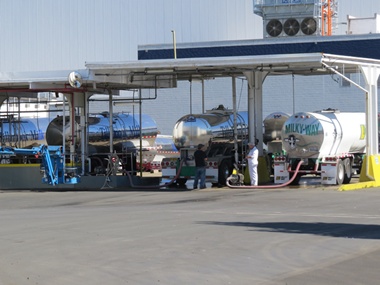
2014-10-06: Milk Delivery
It was interesting watching them pump the milk from the double milk tankers from the dairies into the tanks in the same way that gas is delivered to a gas station.
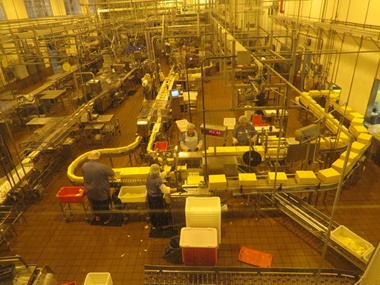
2014-10-06: Cheese Line
When we were here years ago, we got to see the whole cheese making process. This time we only got to view how they packaged the cheese.
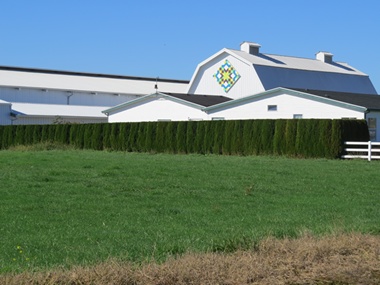
2014-10-06: Quilt Trail
As we were driving around the Tillamook area we saw that they have quilt squares mounted on both barns and stores. We were told that this project was begun in 2009 and to date, there are 95 either 4-foot by 4-foot or 8X8 squares hanging. We found this square called Westward Ho hanging on the south side of the barn at the Abbott dairy farm. The north side of the barn showcases a square called Windblown.
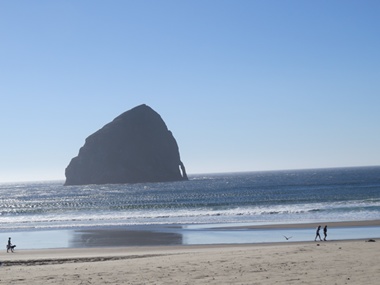
2014-10-06: Cape Kiwanda Haystack Rock
Cape Kiwanda Haystack Rock is located in Cape Kiwanda, the third scenic cape. It stands 327-feet above the sea and is the fourth tallest sea stack or off-shore monolith in the world. We like to call it haystack jug because it's got a handle-like arch on it's side. Cape Kiwanda is the home of the dory fleet. The flat-bottomed dories, originally built from spruce planks in a design that is unique to Oregon, are legendary for their fresh catch and their trademark launchings and landings-taking off through the waves right from the beach and returning with a slide up onto the sand with a day's catch. Commercial dory fishermen have been fishing out of Pacific City since the early 1900s, although they began to rule the area as the primary fishermen in the '60s and '70s.